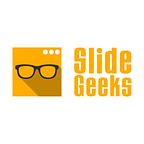Know All About PowerPoint Ribbon to Create Effective Presentations [PowerPoint Tutorial Chapter 1]
What you will learn in this Tutorial: In this tutorial, you will get information about Quick Access Toolbar, tabs, groups, and buttons which you can use to make your work easier. The user interface of Microsoft PowerPoint 2013 is based on the Ribbon. It is a bar across the top of the window that contains various tabs, all with several group of commands. When you work on your presentation, you will use these tabs to complete common activities in PowerPoint. When you are working with tabs you should be aware of some terms.
- Ribbon: Ribbon is a whole bar that shows all the tabs and commands. You don’t need to search for this option as it comes by default when you open PowerPoint 2013.
- Quick Access Toolbar: A customizable toolbar which contains a set of commands from which you can easily choose frequently used commands
- File Tab: This particular tab enables you to go to backstage view from where you can choose to work on a new presentation as well as on a recent presentation. It also allows you to save your presentation, print it and do other file-related tasks.
- The Insert tab enables you to add something to a slide which includes pictures, links, charts, shapes, text boxes, video, and more. This assist you in adding style to your presentation.
- The Design tab enables you to add themes which can change the look and feel of your presentation. Different themes comprise different slide designs.
- The Transitions tab allows you to apply slide transitions which is the movements you see between slides when presenting a slide show.
- The Animations tab enables you to animate text as well as objects such as shapes, pictures and clip art. You can use them to draw attention to any particular content.
- The Slide Show tab provides you tools to make your presentation smooth and professional when you are ready to present it. It includes options such as rehearse timings, record slide show, etc.
- The Review tab gives you the access to editing features such as run spell-check and add comments. This makes it easier to review the presentation.
- The View tab enables you to check your presentation in different ways such as normal view, outline view, slide sorter, reading view, and more. These help you to prepare and organize your slide shows.
- The Format (contextual) tab appears on the screen when you choose to work on a certain content such as a picture, chart or a graphic. The context name appears above the tab name. Drawing Tools is the context name for the Format tab.
Minimizing and Maximizing the Ribbon: The Ribbon in PowerPoint 2013 is designed in such a way that it responds to your current assignment. However, it gives you an option to minimize it if you feel that it is taking much space.
Also Read: How to Apply Default Themes and Custom Themes to Your Presentation [PowerPoint Tutorial Chapter 2]
- Click the Ribbon Display Options arrow on the right corner of the Ribbon (see Figure 1.1).
- Choose the appropriate option from the pull-down menu. The Auto Hide Ribbon shows PowerPoint in full screen and hides the Ribbon (see Figure 1.2).
- To make the Ribbon visible, click the three dots at the right side of the screen (see Figure 1.3).
- Show Tabs option shows the Ribbon tabs only and hides the command groups (see Figure 1.4).
- Show Tabs and Commands makes all the tabs and commands visible. You get this option by default when you open PowerPoint 2013 (see Figure 1.5).
- The size of the PowerPoint ribbon automatically adjusts according to the size of the window in which PowerPoint is running.
- All the tabs and buttons appears on the screen when you first time open PowerPoint 2013 (see Figure 1.6).
- When the size of the window is smaller, groups start collapsing (see Figure 1.7).
- Finally, the groups collapse into single large buttons with drop-down lists from which you can choose the specific commands (see Figure 1.8).
QUICK ACCESS TOOLBAR: The Quick Access Toolbar is located on top of the Ribbon and allows you access to commands irrespective of the tab selected. It includes the Start Presentation, Undo, Repeat, and Save commands by default. You have an option to add more commands as per your preference.
- Below image shows where you can locate Quick Access Toolbar (see Figure 2.1).
- To add more commands to the Quick Access Toolbar, click the pull-down arrow to the right of the Quick Access Toolbar. Choose the command you want to add from the menu (see Figure 2.2).
- Select More Commands to choose from more command options (see Figure 2.3).
- Select the command you wish to add to the Quick Access Toolbar and then click the Add button (see Figure 2.4).
- You can also choose to show the Quick Access Toolbar below the Ribbon by clicking Show Below the Ribbon (see Figure 2.5).
